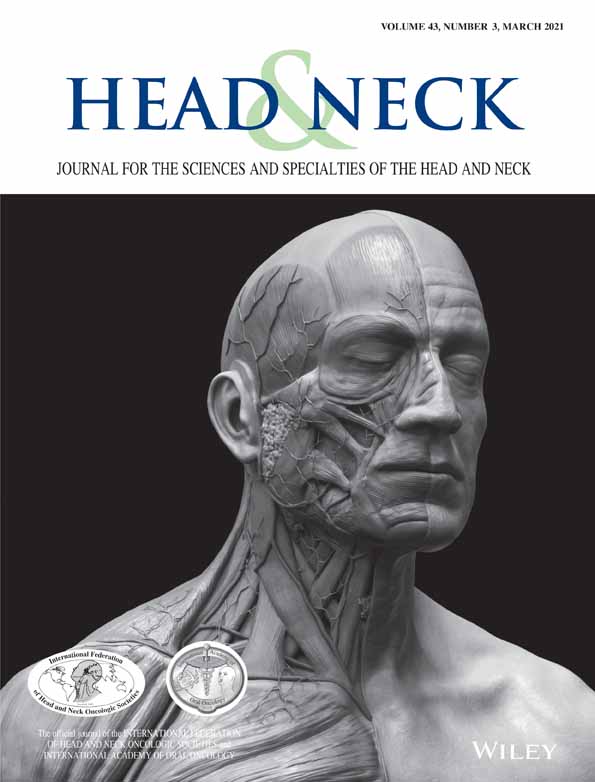Preliminary development and validation of a measure of fear of swallowing and swallowing-related movement injury in head and neck cancer: Swallowing Kinesiophobia Scale
Abstract
Background
Fear is an under-recognized issue in intervention adherence in head and neck cancer (HNC). We developed and validated a patient reported outcome for swallowing fear in HNC patients.
Methods
Items were adapted from the Tampa Scale for Kinesiophobia to swallowing function. A beta version was completed by 51 HNC patients undergoing chemo +/− radiotherapy at baseline and post-treatment. Psychometric and factor structure analyses were applied.
Results
Swallowing Kinesiophobia Scale (SWKS) demonstrated strong face and content validity, internal consistency, and test-retest reliability. Factor analysis revealed three-factors: somatic factor, swallow avoidance, and fear of harm. Factors correlated positively with depression score, worry scale, and anxiety and pain scales. Score differences between patient subgroups (dysphagic vs nondysphagic) confirmed discriminative validity.
Conclusion
The SWKS is a psychometrically valid tool to identify patients with fear of swallowing and swallowing-related movement. It can help identify patients early in treatment who may need additional support.
CONFLICT OF INTEREST
The authors declare no conflict of interest.
Open Research
DATA AVAILABILITY STATEMENT
The data that support the findings of this study are available from the corresponding author upon reasonable request.




